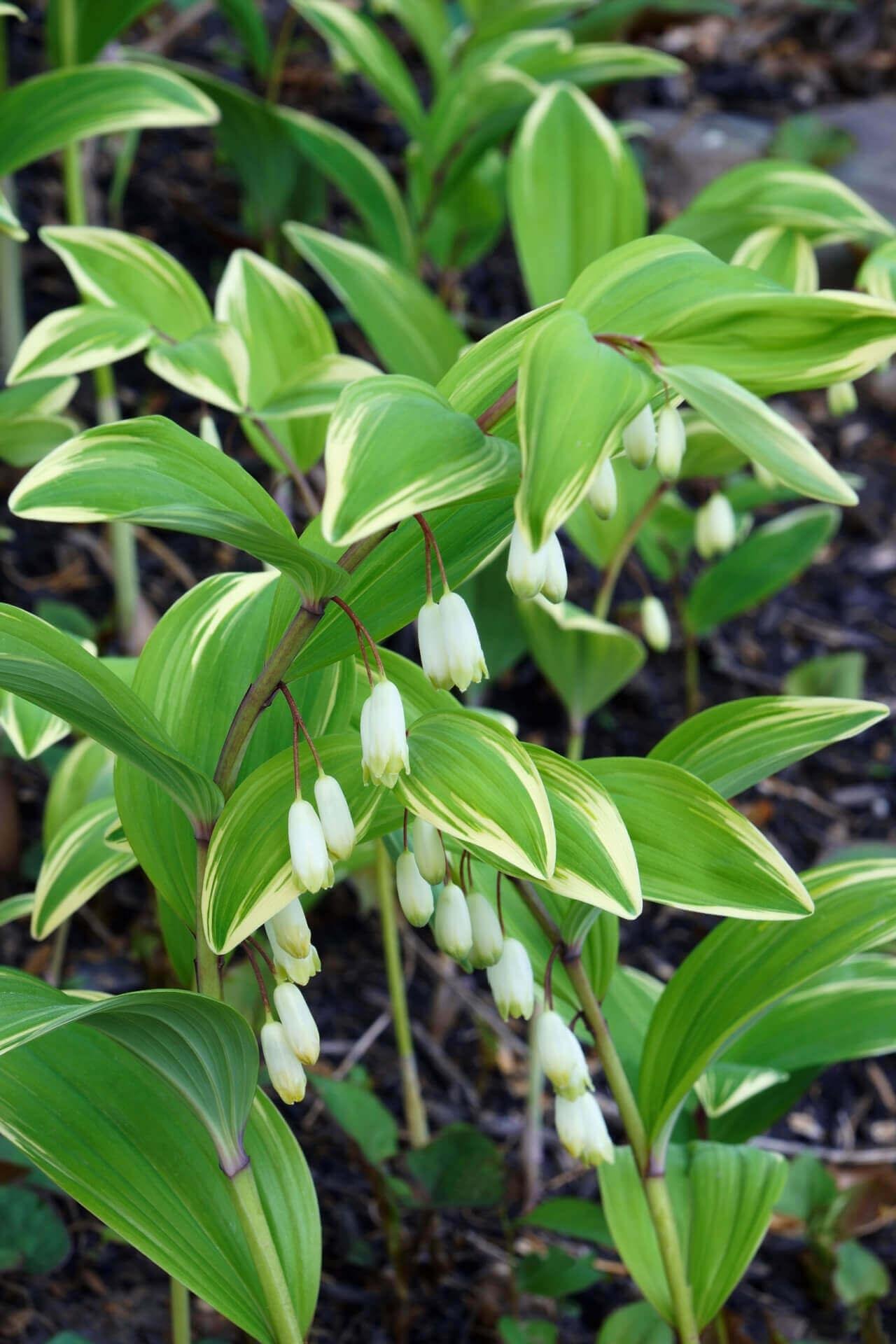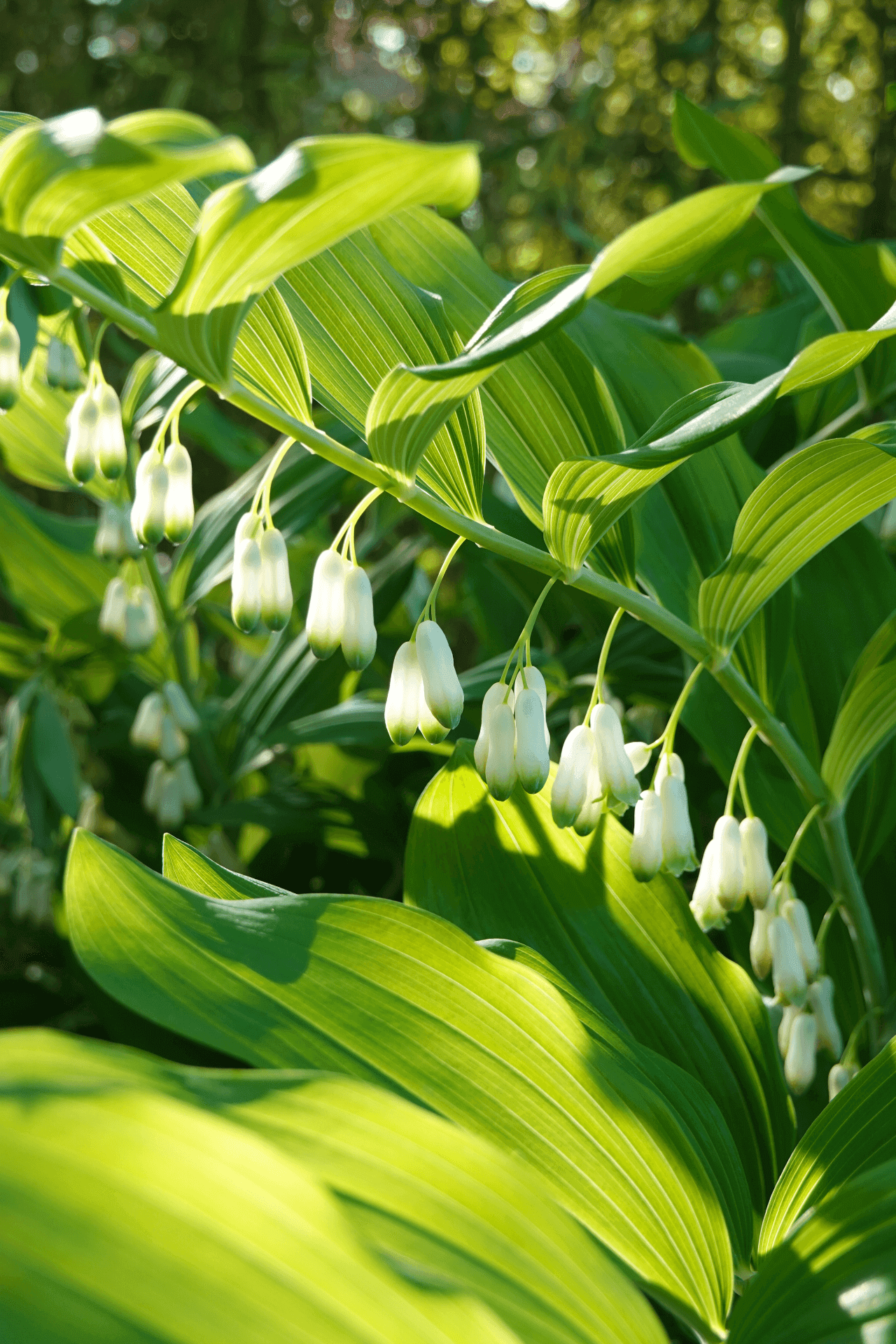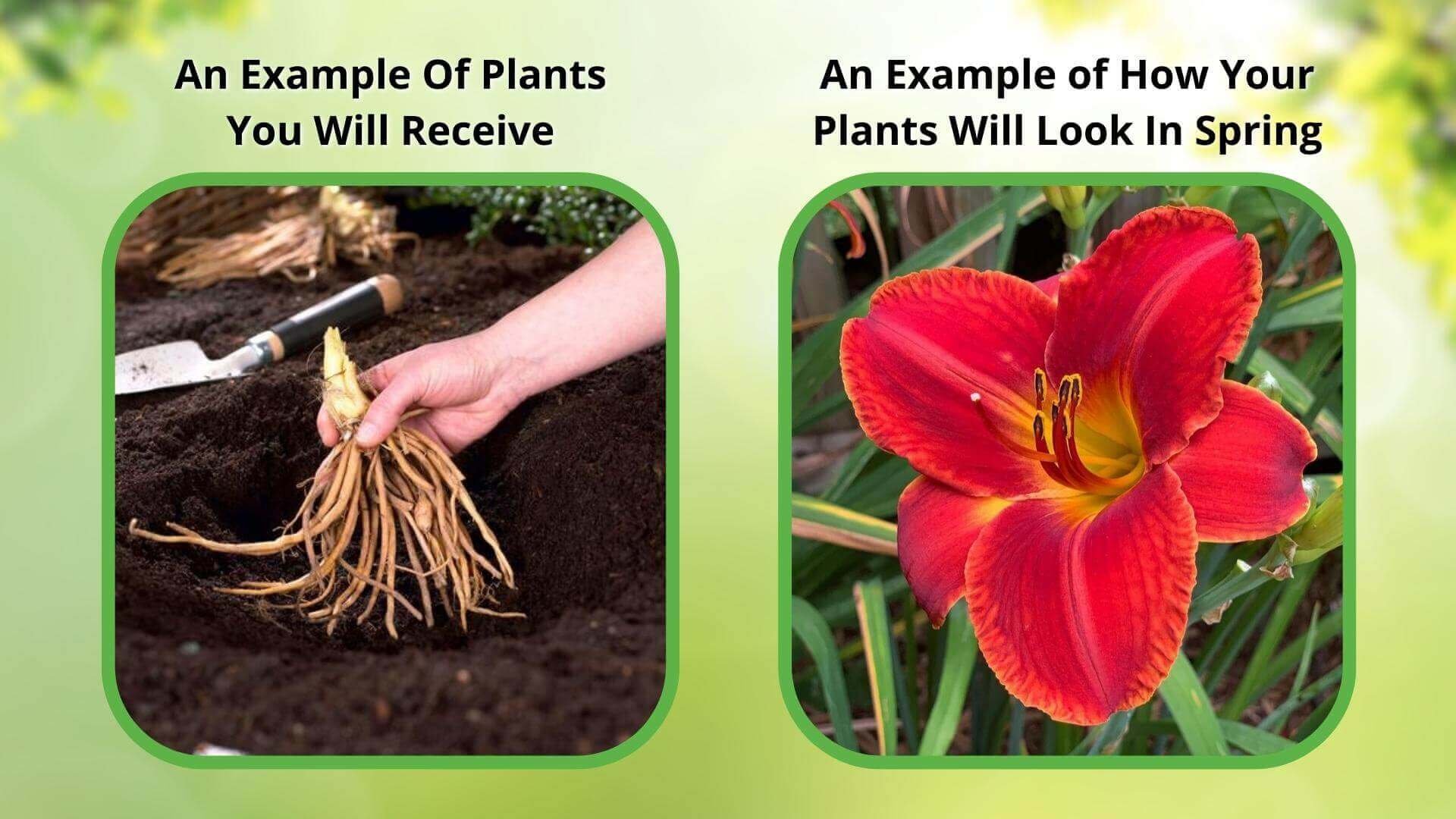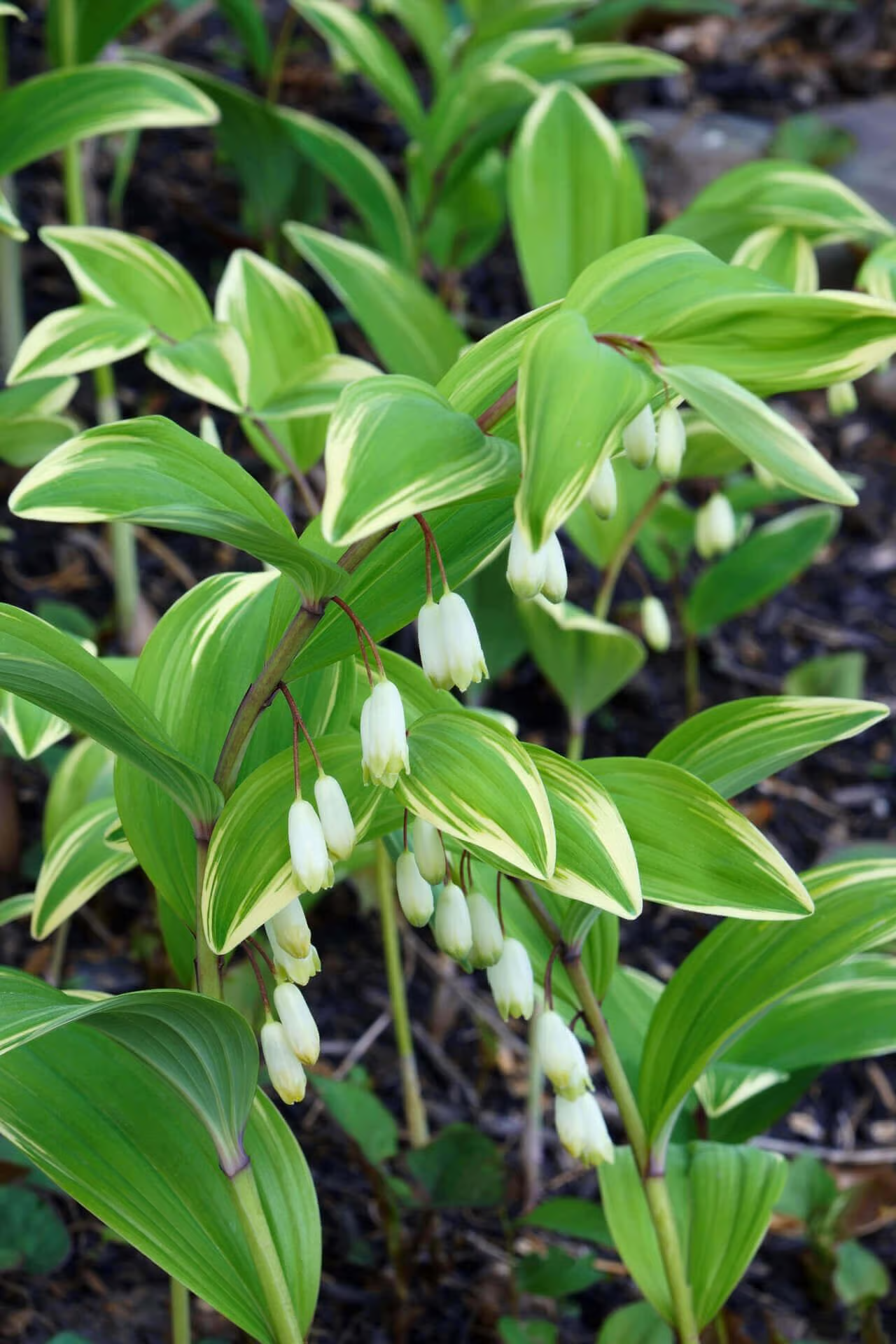



Solomon's Seal Plant
Low maintenance and drought-tolerant
Excellent for shaded garden spots
Provides year-round garden interest
Thrives in
ZONE 3ZONE 4ZONE 5ZONE 6ZONE 7ZONE 8ZONE 9This plant ships:
Ships Week of May 19th1 Year Guarantee on all plants
Solomon’s Seal - Polygonatum biflorum
Solomon’s Seal (Polygonatum biflorum) is a native plant with bell shaped white flowers that hang from the long, arching stems. Leaves are beautifully and lightly variegated with white streaks that look as though they were painted on by Mother Nature.
Plant Details - Solomon's Seal
Family: Asparagaceae
Light Requirement: Shade
Water Needs: Moderate
Height: 2 – 3 ft.
Spread: 1 – 2 ft.
Growth Rate: Slow
Bloom Time: Spring
Flower Color: White
Wildlife Value: Attracts bees and butterflies.
Landscape Uses and Maintenance – Solomon’s Seal
Solomon’s Seal is a perennial, herbaceous plant that adds lovely height and dimension to your garden. White flowers complement paired leaves. After flowering dark blue berries will develop.
Add this plant to your shady border or woodland garden. When it dies back it will leave gaps, so be sure to plant other perennials to fill in the spots it leaves behind. It pairs beautifully with other spring blooming perennials like Astilbe and Bleeding Heart, and with spreading ferns.
As an understory plant, it will thrive in an area with full to partial shade that is out of afternoon sun. The afternoon sun will lead to sun scald.
This is a low maintenance plant that will need watering infrequently, making it a great choice for the busy gardener. However, make sure to water thoroughly and frequently from when you receive your plant until the root system is well established.
This plant prefers rich soil with plenty of organic matter. Add compost, leaf mold, or similar to the soil around this plant to give it rich soil. Fertilize in the early spring time before the new growth begins to encourage vigorous flowers to develop.
It will slowly naturalize and spread in your garden, given enough space to do so and proper growing conditions, via its expanse of underground rhizomes. You can make the process faster by digging up parts of your plants to divide and replant.
Deer resistant. Watch this plant for nematode, slug, and snail activity. You will know they have found your plants when you see small holes or brown streaks on the leaves.
Noteworthy Characteristics
Solomon’s Seal attracts birds and butterflies.
This Is How Your Plants Will Look upon Delivery

Bloom Season
Spring
Bloom/Foliage Color
White
Height at Maturity
Over 12"
Care
Solomon's Seal thrives in well-drained soil with consistent moisture. Mulch near the plant to maintain moisture and suppress weeds. Prune dead or damaged stems in early spring to encourage new growth. Watch for nuisances like spider mites and treat them as needed.
Plant Reproduction
Solomon's Seal Plant spreads slowly by creeping underground stems called rhizomes.
Shipping date depends on the date displayed and chosen when you order from the product's page.
We only accept returns on plants verified dead. If you think your plants have died, we offer a 1 year warranty, please use this File a Claim Link to verify dead plants and start with return warranty process.






Elegant Foliage:
Graceful, arching stems with lush green leaves add refinement to shaded areas.
Charming Flowers:
Delicate, bell-shaped flowers dangle from the stems, offering subtle beauty.
Shade Tolerance:
Perfect for low-light areas where other plants may struggle.
Seasonal Interest:
Unique flowers and attractive foliage provide beauty throughout the growing season.
Caring Tips
How do I care for my Solomon's Seal Plant?
Each box contains detailed care instructions and information about your product. But here's the basics.
Care Tips
Solomon's Seal thrives in well-drained soil with consistent moisture. Mulch near the plant to maintain moisture and suppress weeds. Prune dead or damaged stems in early spring to encourage new growth. Watch for nuisances like spider mites and treat them as needed.
Light Requirements
Solomon's Seal prospers in partial to complete shade. It prefers dappled sunlight or light, filtered shade, making it ideal for woodland gardens or shaded areas. Too much unaffected sun can burn its leaves.
Hardy Planting Zones
3 • 4 • 5 • 6 • 7 • 8 • 9
Header
Use this content to share information about your store and products.
Frequently Asked Questions
How often should I water my plants?
How do I know if my plant is getting too much or too little sunlight?
What should I do to prepare my plants for winter?
What are the signs that my plant needs fertilizing?
How can I prevent pests from damaging my plants?
How do I choose the right plant for my climate zone?






